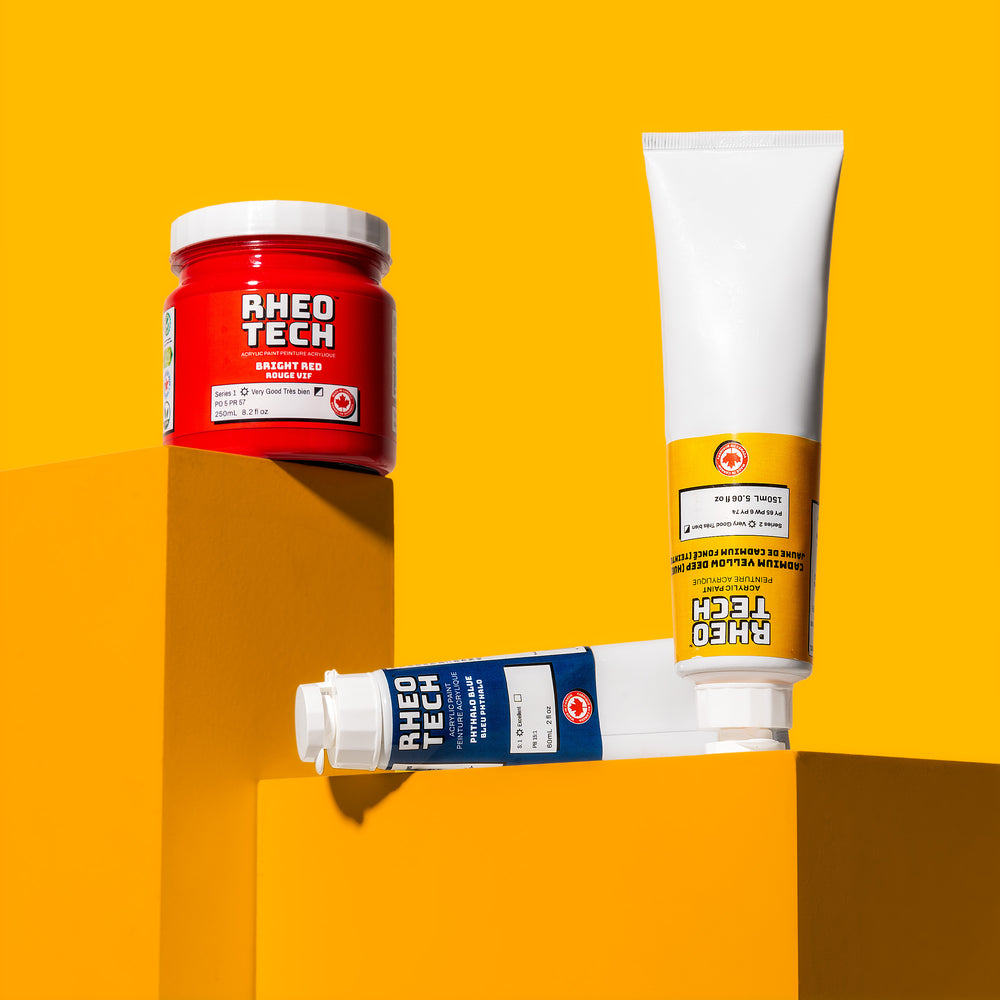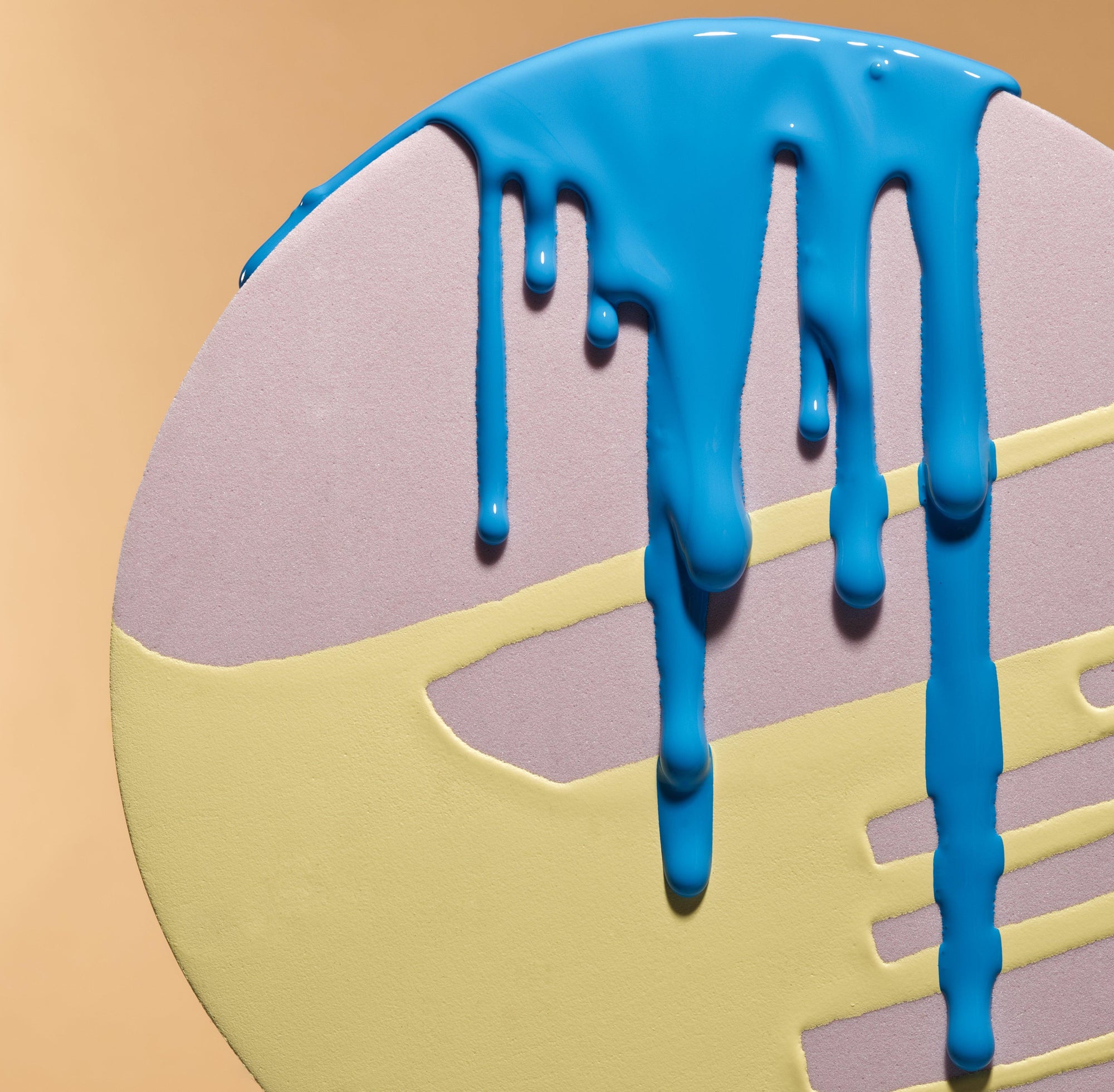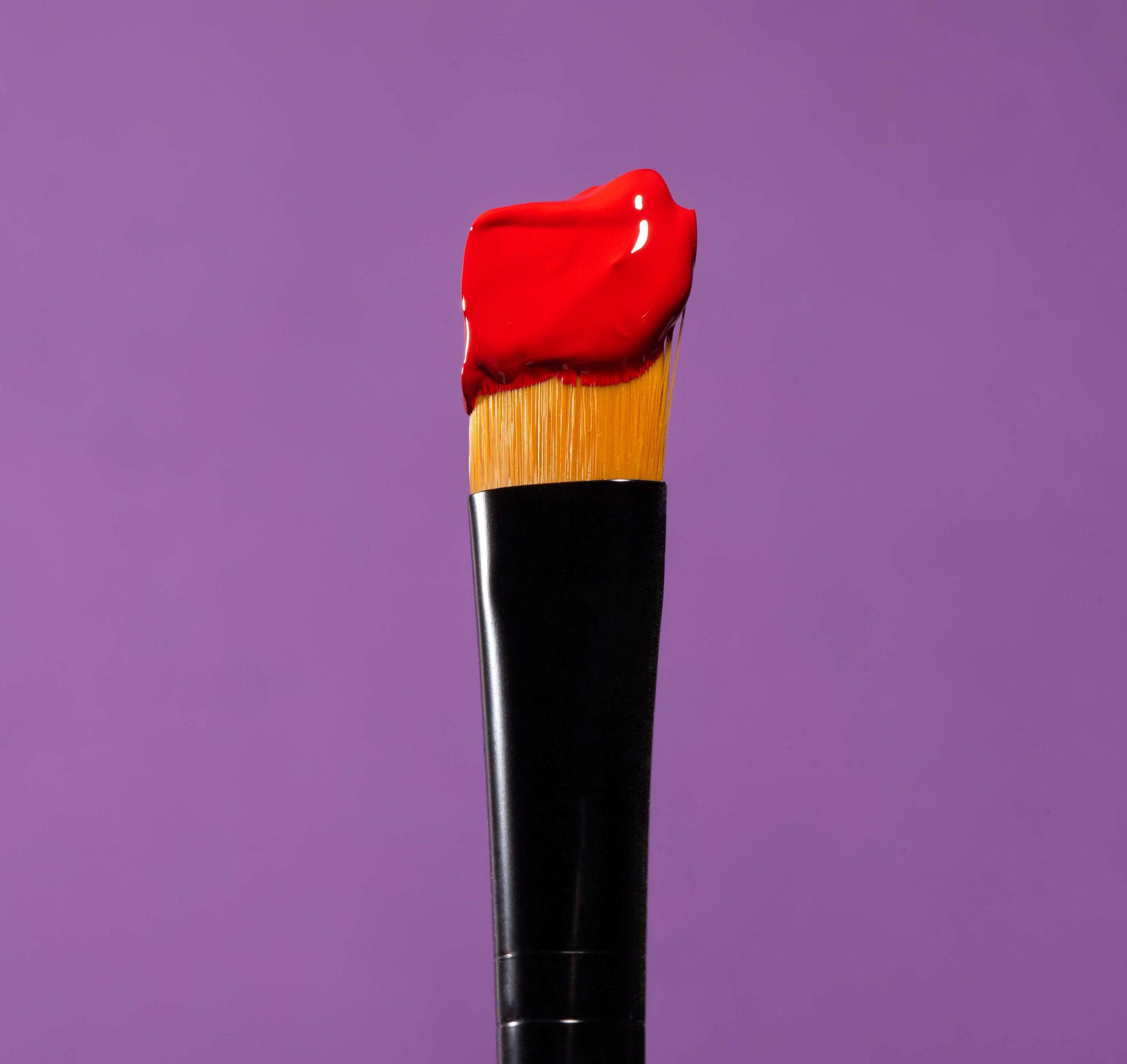Acrylic paint is a relatively new type of paint, and has become a popular option for artists at any stage. Acrylic is a water-based paint made from 100% acrylic polymer emulsion. Read more about how acrylic paint is made and its properties in What is Acrylic Paint?
While it is also suitable for professional applications, acrylic paint’s versatility and ease-of-use makes it a great starting point for beginners. Acrylic dries relatively quickly, especially in comparison to oil paint, and is permanent and water-fast when dry. Unlike oil, acrylic also doesn’t require the use of harsh solvents (though it should still be used in a well-ventilated area).
Acrylic requires few materials to get started, although they each have an important part to play in the process. In this series, we provide an overview of the supplies that you’ll need to get started with acrylic paint.
In addition to paint, there are a few materials that will help you get started with acrylics. Some of these are key to working with acrylic, and others can be fun additions to your painting process.
Brushes
Brushes are an important vehicle for getting the paint on the surface (but not the only way to do so). There are lots of choices to make when selecting a brush, such as its size, shape, and bristles, although much of these options come down to personal preference.
Look for brushes that are suitable for acrylic (watercolour brushes will likely work as well), as oil brushes are typically much more stiff and sturdy than needed.
Bristles are either synthetic (often taklon) or natural, and both are suitable for beginner and professional applications.
Brushes also often come in long and short handle varieties, and either can work well for acrylic (typically long handles are used for oil and short for watercolour, with acrylic being suited to both). The shape and size of the brush needed will depend on the desired effect in the paint - detailed work will be easier with a small round or filbert brush, while applications like washes are easier with a larger flat or stroke brush.
However, these are not necessarily hard and fast rules - large round brushes can cover a lot of surface, and smaller flat brushes can create interesting details. As is the case with many artistic choices, it depends on personal preference and the desired effects for your project.
Brush care and upkeep is important to maintain brush quality and integrity (although it can also be handy to have some worn brushes around for creating different effects).
Make sure to fully wash the paint from your brushes after use, and to carefully reshape the hairs before letting the brush dry.
Our Linseed Brush Soap is great for cleaning brushes, as it also conditions the brush (and your hands).
Palette knives and other tools can also be used to apply paint to your surface, and can be used to create unique effects. These tools are especially useful for thick applications and textures, and are available in different shapes and sizes to provide these effects. They are also helpful to cover a large surface quickly, particularly for priming purposes or establishing a base texture.
Paint Palettes
Paint Palettes are often used to hold or mix paint colours while working on a project. There are various types of reusable palettes, and they also come in paper varieties that can be disposed of when you’re done working with them.
Reusable palettes include flat, non-stick palettes, butcher tray style palettes, and palettes with wells; many also come in different shapes like ovals or rectangles that are easy to hold while painting.
Our Non-Stick Palette has a flat surface that is great for colour mixing with a brush or a knife, and acrylic paint can be peeled cleanly away after drying so that the palette can be reused. Additionally, the leftover dried paint itself can be repurposed for collage and texturing, or to create acrylic gel transfers and acrylic skins.
Tools are important assets to your painting practice - some are key to the process, while others can make things easier or add unique variables to your work. Many of these choices come down to personal preference and the effects you’d like to create. Have fun experimenting with different tools to learn which you like best!
Explore our range of acrylic paints and supplies through our website, or at Art Noise online or in-person in Kingston. If you use our materials, make sure to tag us on social media posts - we would love to see your work!
For more information, check out our other blog posts on acrylic paint, our FAQ page, or contact us.





